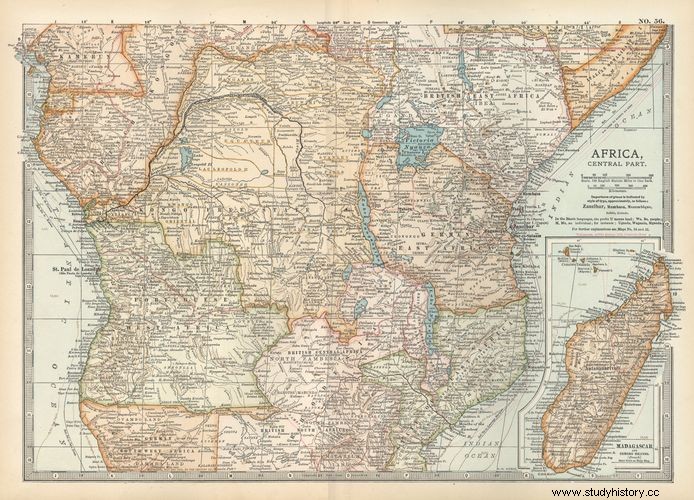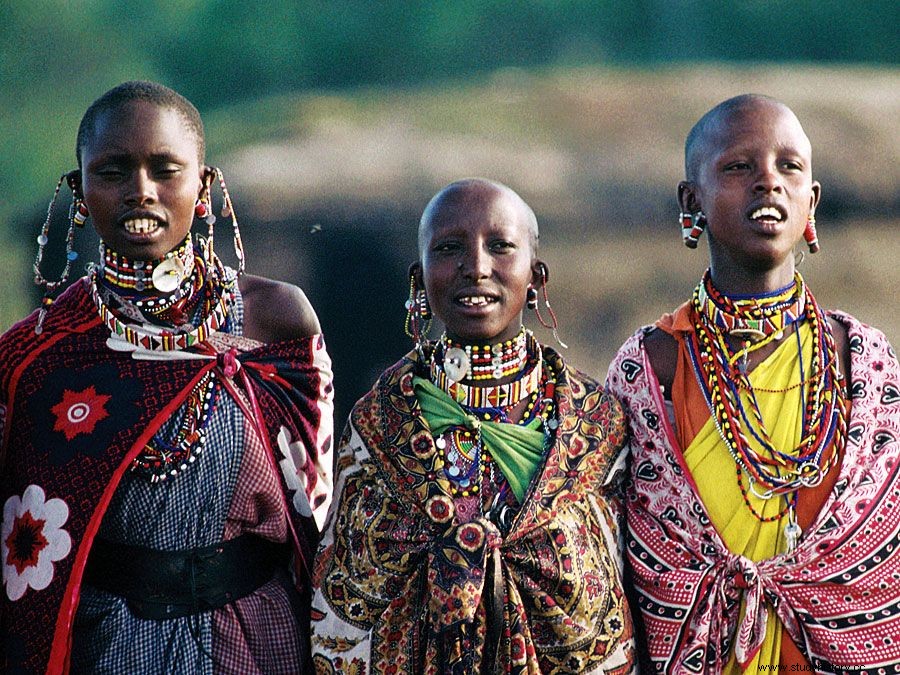Congo Free State , French État Indépendant du Congo , former state in Africa , which occupied almost the entire Congo river basin, along with the modern Democratic Republic of the Congo . It was founded in the 1880s as a private property by a group of European investors led by Leopold II. , King of the Belgians. The king's attention was drawn to the region when Henry (later Sir Henry) Morton Stanley 1874–77 den Congo explored. In November 1877, Leopold founded the Committee for Studies of the Upper Congo (Comité d'Études du Haut Congo, later renamed) Association Internationale du Congo ) to open up the African interior to European trade along the Congo. Aligned between 1879 and 1882 Stanley under the Patronage of the committee stations in upper Congo and opened negotiations with local rulers. By 1884, the Association Internationale du Congo had signed treaties with 450 independent African entities and, on that basis, asserted their right to govern the entire territory concerned as an independent state. On the Berlin West Africa Conference from 1884 to 1885 her name became the Congo Free State and the European powers recognized Leopold as his Sovereign .

 Britannica Quiz Exploring Africa:Fact or Fiction? Though this continent is teeming with natural resources and diverse wildlife, how much do you really know about Africa? Sort these facts from Cairo to Khartoum in this African odyssey.
Britannica Quiz Exploring Africa:Fact or Fiction? Though this continent is teeming with natural resources and diverse wildlife, how much do you really know about Africa? Sort these facts from Cairo to Khartoum in this African odyssey. Leopold expanded his military control of the interior in the early 1890s. The Arab slavers of the Region Lualaba succumbed 1890, as their leader Tippu Tib went to Zanzibar. Katanga , rich in copper and other minerals, fell in 1891 after Leopold's troops defeated the ruler Msiri . Later uprisings were suppressed. The construction (1890–98) of a railroad to bypass the Congo Rapids below the Stanley Pool (now Malebo) provided transport links inland. The upper reaches of the river and its tributaries were all navigable by steamboat.
The regime was placed under Leopold's unbridled personal control for his treatment of the Congolese notorious . Forced Labor was used to represent wild gum, palm oil and ivory to collect . Beatings and lashings were used to force villages to meet their quotas for collecting rubber, as was hostage-taking:a method used by Leopold's agents was the kidnapping of the families of Congolese men, who were then forced to adhere to labor quotas (often unattainable) to secure their families' release. Rebellious actions by the Congolese provoked quick and harsh responses from Leopold's private army, the Force Publique (a group of African soldiers led by European officers), who burned the villages and the families of the rebels slaughtered. Force Publique troops were also known to cut off the hands of Congolese, including children. This mutilation served not only as a punishment and a method to further terrorize the Congolese into submission. but it also provided a measure (collecting severed hands) by which soldiers could prove to their commanders that they were actively suppressing rebellious activity. Brutality was rampant in mines and plantations. The population of the entire state is said to have declined from around 20 million to 8 million.
The truth about Leopold's brutal regime eventually came out, largely thanks to the efforts of the Congo Reform Association, an organization that was founded by British citizens at the beginning of the 20th century. Eventually, outrage among the people of Britain and other parts of Europe grew so strong that Leopold was forced to transfer his authority in the Congo to the Belgian government. In 1908 the Congo Free State was abolished and replaced by the Belgian Congo , a controlled by the Belgian Parliament colony .
